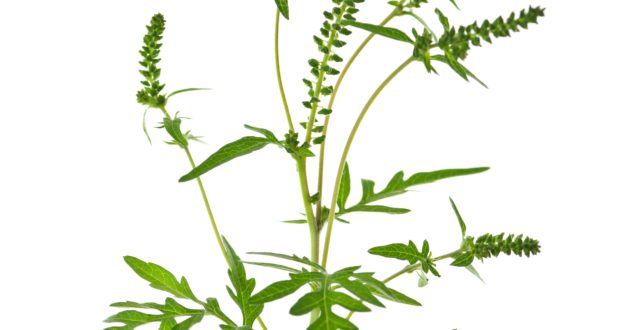Do you suffer from seasonal allergies? If so, there’s a good chance that your annual misery can be blamed on ragweed, a technically harmless weed found across the United States. By learning more about this plant, allergy sufferers can take steps to minimize their symptoms.
Ragweed, Ragweed Everywhere
On notable trait regarding ragweed is that it’s hard to get away from; on the North American landmass, there are no less than 17 species of ragweed taking up space. Each year, ragweed plants disperse tiny grains of pollen into the atmosphere, beginning at the end of spring and continuing through summer and fall. This pollen is the means by which ragweed plants are fertilized.
Despite often triggering numerous health problems, pollen by itself not a harmful substance to the body. In fact, Floating pollen grains have no impact on those fortunate enough to not have allergies. Unfortunately, this substance wreaks havoc amongst allergy sufferers, whose immune systems mistakenly conclude that pollen threatens the body’s health. Consequently, the immune system will respond by releasing a barrage of chemicals, causing the sneezing, itching and increased mucus production synonymous
with allergies.
A Widespread Problem
If you suffer from a ragweed allergy, you’re hardly alone. In fact, it is estimated that roughly a quarter of Americans are allergic to this plant. Once a ragweed allergy appears, it usually becomes a permanent fixture in a person’s life. Aside from stuffed or runny noses, hallmarks of a ragweed allergy flare-up include watery eyes, coughing/wheezing, sinus pressure, throat discomfort and disrupted sleeping patterns.
Treatment Options
Given the prevalence of ragweed allergies, a number of treatments have been developed to alleviate ragweed allergy symptoms. The names of these medicines should sound familiar, even for those not allergic to ragweed; for example, many people seek relief from antihistamines, such as loratadine (Claritin) or diphenhydramine (Benadryl). Nasal sprays, such as Nasonex and Flonase, are also used to reign in allergy symptoms.
Some ragweed allergy sufferers have to contend with stuffy noses, making daily life noticeably more difficult. Decongestants are a popular choice to open up clogged nostrils. Some allergy medications feature both an antihistamine and decongestant. Finally, people with especially severe ragweed allergies might need allergy shots for their condition to improve.
 Natural Knowledge 24/7 Educate yourself with nutrition, health and fitness knowledge.
Natural Knowledge 24/7 Educate yourself with nutrition, health and fitness knowledge.






